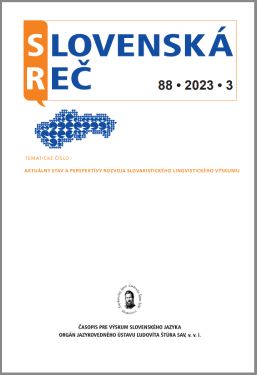Súčasný slovakistický výskum na Fakulte slovanských filológií Sofijskej univerzity sv. Klimenta Ochridského
Current Research in Slovak Linguistics at the Faculty of Slavic Studies, Sofia University "St. Kliment Ohridski"
Author(s): Diana K. Ivanova, Vladimíra Bashir GéčováSubject(s): Language studies, Language and Literature Studies, Theoretical Linguistics, Applied Linguistics, Morphology, Lexis, Language acquisition, Western Slavic Languages
Published by: SAV - Slovenská akadémia vied - Jazykovedný ústav Ľudovíta Štúra Slovenskej akadémie vied
Keywords: Sofia University St. Kliment Ohridski; Slovak linguistics; Slovak as a foreign language; morphology; lexicology; word-formation
Summary/Abstract: Although it is one of the youngest Slavonic specialties at SU St. Kliment Ohridski, Slovakistics has attained its 30th anniversary. Its history, however, reaches much further back in time – to the end of the 60’s of the 20th century when the Slovakian lectureship was created, and even further back when during the 40’s the Slovak language system assumed its place in the lectures of Prof. Ivan Lekov for the first time. The Slavistic tradition at Sofia University is a peer of the university itself – a part of the Faculty of History and Philology whose first students were Slavists and historians. In the years of its existence, Slovak Philology, as an independent specialty within the Faculty of Slavic Philologies, has succeeded in occupying its place on a par with Bohemistics, Polonistics, Serbo-Croatistics and Ukrainistics, offering a full five-year Master’s course of study. Slovakistics graduates find proper realization in a wide range of professions both in the academic and educational field and beyond. At the same time, the teachers of the Slovakistic profile give their contribution in the academic Slavistic production both through contrastive research dealing with various aspects of the Bulgarian and Slovak languages in connection with the individual language levels (phonetics and phonology, morphology, lexicology and word-formation, etc.), in the field of translatology, and also through the preparation of educational resources (computer and digital) in the teaching of the Slovak language and their theoretical substantiation.
Journal: Slovenská reč
- Issue Year: 88/2023
- Issue No: 3
- Page Range: 364-374
- Page Count: 11
- Language: Slovak

